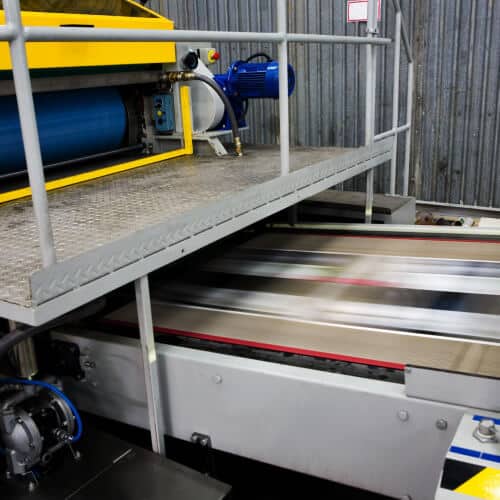A Comprehensive Guide to Comprehending Litho Printing Techniques
The globe of litho printing, a method stemming from the late 18th century, is an interesting blend of background, advancement, art and science. Remain with us as we trip into the fascinating realm of litho printing.
The Historical Development of Litho Printing
The historical trajectory of litho printing, a pivotal innovation in the realm of communication, is a captivating tale of human resourcefulness. Birthed in the late 18th century by Alois Senefelder, this method was initially a cost-effective approach of releasing staged works. Lithography, stemmed from the Greek words for 'stone' and 'to write', made use of a smooth stone surface to transfer images onto paper. The procedure progressed with the development of the rotary press, which greatly enhanced productivity (litho printing). In the 20th century, the technology of offset lithography revolutionized the market, permitting for mass production of high-quality prints. Each phase of litho printing's advancement showcases humankind's unrelenting search of performance and quality in visual interaction.
Deciphering the Scientific Research Behind Litho Printing Inks
Moving forward in the exploration of litho printing methods, the focus now shifts to the science behind litho printing inks. The make-up of these inks, their drying out procedure, and shade mixing techniques develop the backbone of this complicated art form. Comprehending these aspects is essential to understanding the craft and achieving the wanted print outcomes.
Make-up of Litho Inks
In lithographic printing, the basic duty of litho inks can not be overemphasized. The structure of litho inks varies depending on its purpose, yet normally, they contain two primary components - pigments and vehicles. Pigments, the color-providing components, are carefully ground bits put on hold in the automobile, a fluid that lugs the pigment onto the printing surface. The car is a complex mixture of oils, solvents, and materials, which affect the ink's drying time, bond, and gloss. Furthermore, various ingredients exist to boost particular homes like flow, drying out, and resistance to ecological results. Each element plays a critical part in the final print's high quality, making the precise formulation of litho inks a complex science.
Ink Drying Process
From the make-up of litho inks, attention turns to the remarkable process of ink drying out. Two primary approaches are utilized in litho printing: oxidative drying out and absorption. Absorption, on the other hand, involves the ink seeping right into the paper fibers, which is a faster process but can lead to less vibrant colors.
Shade Mixing Techniques
While the drying procedure plays a crucial role in litho printing, the scientific research of color blending methods holds equivalent value. The scientific research behind litho printing look at this site inks additionally takes into account the openness of the ink, which influences how shades overlay and mix.
The Art and Style Elements in Litho Printing
Litho printing breathes life right into art and layout with its unique elements. Litho printing accommodates a selection of colors, making it possible for artists to develop vibrant and lively prints. This combination of precision and flexibility makes litho printing a favored option for several musicians and designers.
Modern Applications of Litho Printing Methods
Litho printing techniques have actually found extensive usage in the contemporary commercial field. Its influence and value remain to grow with the development of brand-new technologies and innovations in the field. This section will check out these modern applications and the transformative duty they play in the printing industry.
Business Litho Printing Makes Use Of
Litho printing continues to be an essential part of the industrial industry. High-volume printing tasks, such as the production of books, newspapers, and packaging, depend on litho printing for its ability to supply premium image quality find more and cost efficiency. Litho printing also offers a broad color range, premium to that of electronic printing.
Innovations in Litho Printing
Pushing the boundaries of typical methods, modern improvements have sustained a host of advancements in litho printing. One famous advancement is electronic litho printing, which integrates the merits of electronic technology with litho's premium outcome. These technologies underscore the long-lasting importance of litho printing in the modern world.
Checking out the Refine of Litho Printing: Action by Step

Obstacles and Solutions in Contemporary Litho Printing

In spite of the precision and practice that litho printing proudly supports, it is not without its set of contemporary obstacles. The most common concerns include the high first configuration price, trouble in printing variable data, and environmental issues due to chemical usage. Services are arising as technology develops. Digital litho printing permits cost-efficient short runs and very easy modification, addressing the issue of variable data. Environmentally-friendly inks and safer plate-making procedures mitigate environmental worries. Furthermore, innovations in automation have actually lowered labor prices, further democratizing the lithography process. Thus, while there are obstacles, the litho printing market is proactively adapting to satisfy them head-on, ensuring its significance in the future.
Verdict
In verdict, litho printing, with its rich background and scientific details, holds a considerable place in the print market. The future of litho printing hinges on its capability to adjust to these altering needs, verifying its long-lasting worth in an advancing market.
